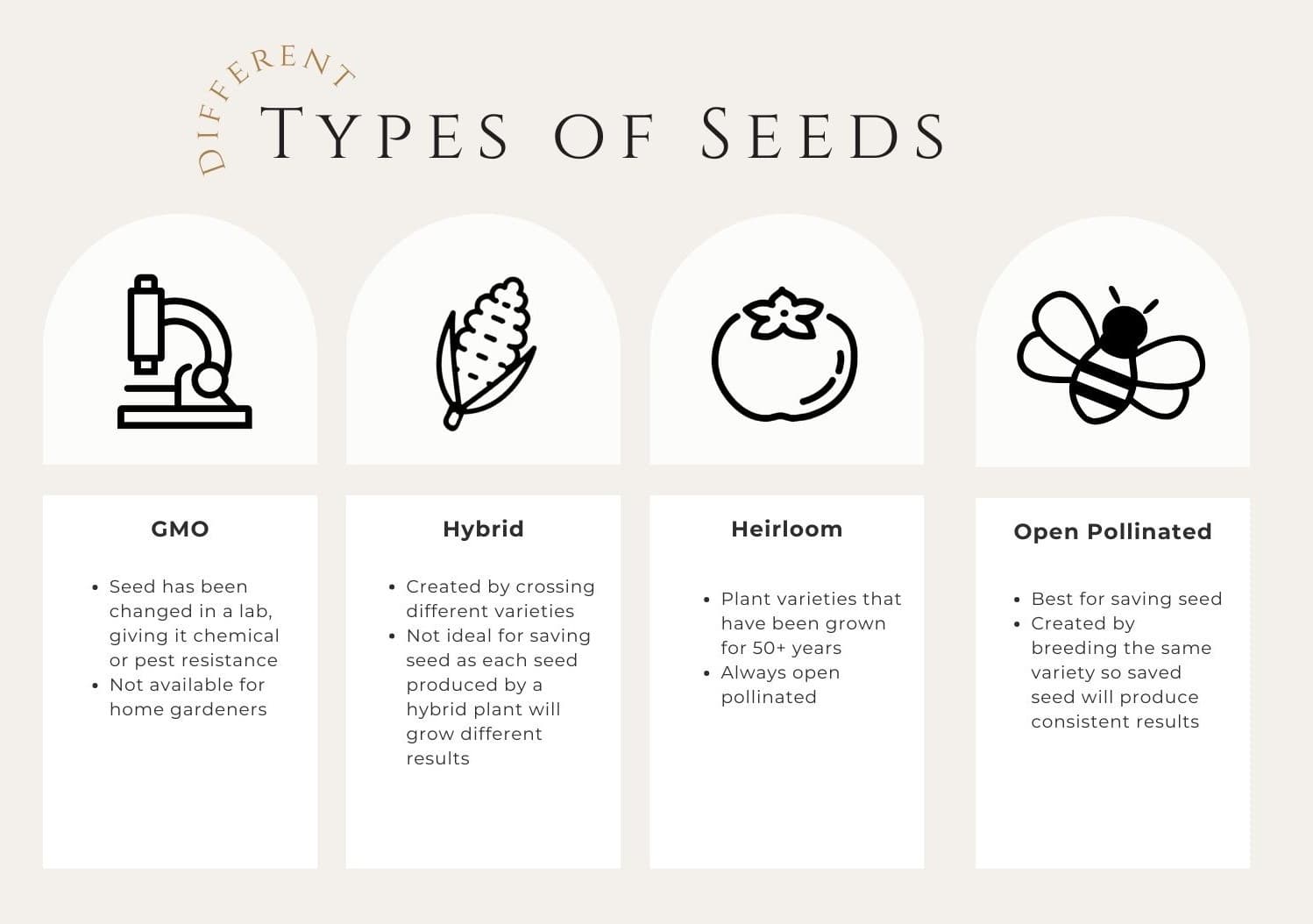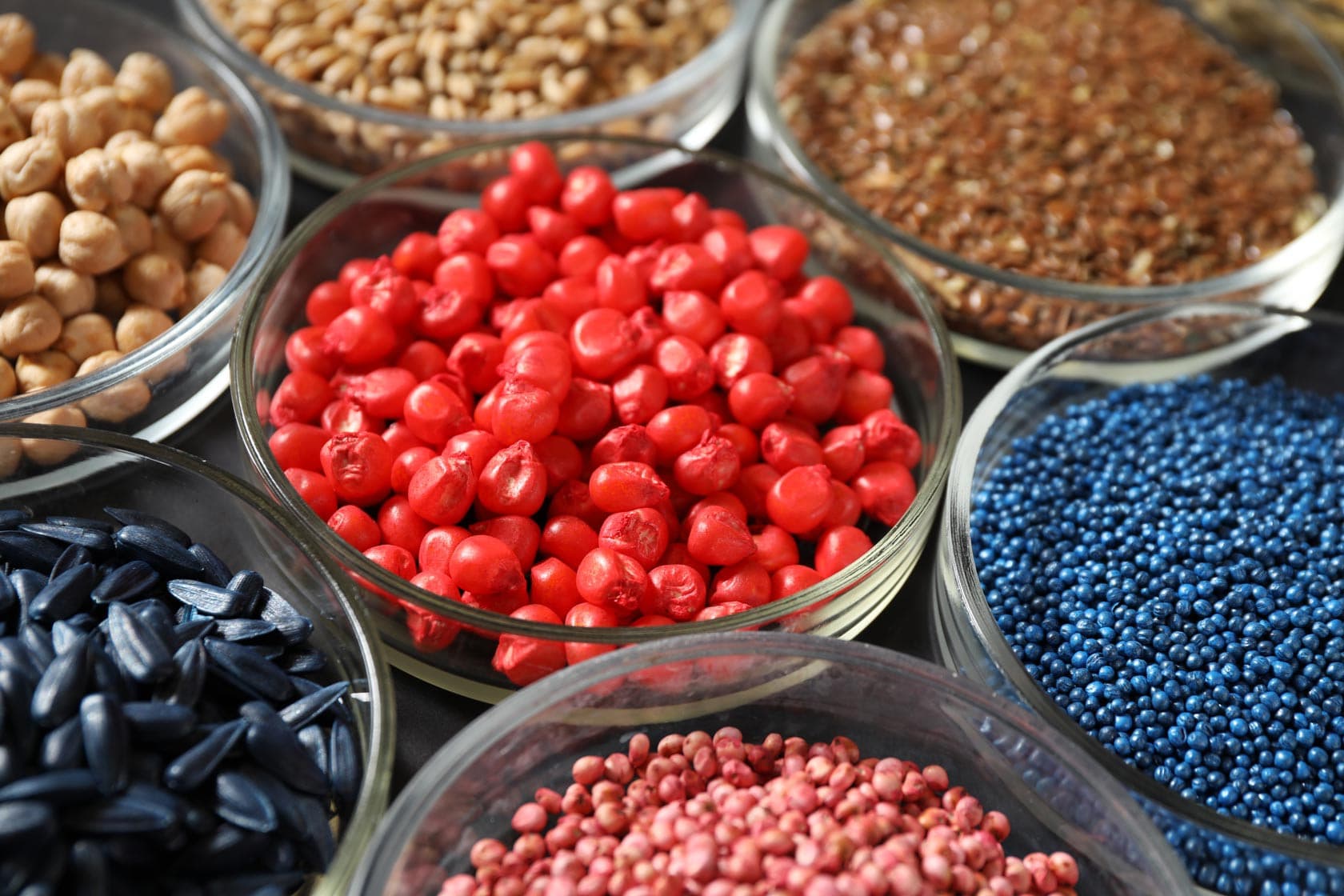Seed Selection
Article by:
Amazing Discoveries™ |
6 min read
How can you get the most out of your seeds? Learn the difference between GMO, hybrid, and open pollinated seeds. What does the term “days to maturity” mean and why is it important? What is the best way to store saved seed from your garden? Get seed selection tips and more!
GMO
GMO or GM stands for genetically modified organism. Genetically modified seeds are seeds that come from a plant which has been engineered in a lab. Scientists add components from plants or animals to encourage certain characteristics such as disease or chemical resistance in the modified plant. Genetically modified plants are convenient but can be harmful for consumption. Crops that are commonly GMO include potatoes and canola. Genetically modified seeds are currently only available to farmers or commercial growers. Home gardeners cannot buy GMO seeds.
Hybrid
Hybrid seeds are created when plants are cross-pollinated to produce a new variety. This hybrid plant will retain characteristics from each parent plant and may have desirable qualities such as increased flavor, disease resistance, or shorter days to maturity. There is a wide range of hybrid variety plants. Some types of fruits or vegetables may be more easily obtained as a hybrid variety, such as corn, tomatoes, cucumbers, or radishes.
The downside to growing a hybrid variety is that it’s difficult to save seeds. Many hybrid seeds will have poor germination or won’t grow at all. Another common problem with hybrid seeds is that the plants that grow from the seeds will have widely different outcomes. Each seed could produce completely different results. For saving seeds, it’s best to choose open pollinated or heirloom varieties.

Open Pollinated and Heirloom
Open pollinated varieties are consistent and reliable. These seeds are produced by breeding parent plants of the same variety. Whereas hybrid seeds are created by crossing Variety X with Variety Y, open pollinated seeds are created by crossing Variety X with Variety X. Seeds saved from open pollinated varieties will produce the same plant and have consistent results, along with improved germination.
Heirloom seeds are old varieties that were developed at least 50 years ago. Heirloom varieties are always open pollinated by default. Unless they are accidentally crossed with another variety growing in your garden, heirloom varieties will produce the same results from seeds you collect year after year.
If you’re concerned about saving seed, it’s best to buy open pollinated or heirloom seeds. Seed packages might not always include complete information, so research your favorite types of fruits and veggies to learn what is available as open pollinated or heirloom.
Treated or Coated Seeds
Sometimes seeds have been coated to make them easier to plant or to combat pests like insects and fungus. Tiny seeds such as lettuce and carrot seeds are often coated to make them easier to plant. Some seed companies use an inert, organic coating for this purpose. However, seeds coated with pesticide or fungicide have been treated with dangerous chemicals that can harm insects, birds, amphibians, and the environment. If you wish to avoid harmful chemicals, read your seed package carefully. To be safe, avoid coated or treated seeds when possible.

Days to Maturity
It’s important to consider more than taste or yield when choosing a seed variety. Many factors such as days to maturity, resistance to disease, and climate requirements should be determined.
Days to maturity is the time it takes for a plant to produce an edible harvest. Some plants, such as herbs, lettuce, or strawberries produce yields early in the growing season, provided they are planted at the right time. Other things such as squash, cabbage, and beans take longer to mature. Most seed packages will have the days to maturity information listed on the back of the package. If you’re a new gardener, learn about the growing climate in your area. The length of your growing season is determined by the dates between the last frost in spring and the first frost in the fall as well as the temperature and precipitation during this time.
How warm is your climate during spring and summer? Do you have more rainy days, or more sunny ones? A mix? Is summer typically dry, or do you experience a higher volume of precipitation? As fall approaches, when do the days start getting cooler and by how much? Even though they may have shorter days to maturity, some plants require heat for growing and ripening their yield right until it’s ready to pick. Other plants such as tomatoes can be picked unripe and will continue to ripen indoors.
Even if you have a short growing season, you can still grow plants whose days to maturity exceeds your growing season. Starting plants indoors gives them a head start. If you have a greenhouse or even a sunny window in your house, you can start seeds in soil, and let them grow until the risk of frost has passed. Depending on your location, seeds can be started as early as January, or as late as March. Understanding your growing climate will help you determine if and when seedlings should be started indoors.
Space is also an important factor for consideration. Some plants have a wide range of varieties, with some being more suited to bigger or smaller spaces. Choose the right variety for the gardening space available to you.
Seed Storage Tips
Once you’ve harvested mature fruits or vegetables you can extract and store the seeds until the next gardening season. Find out how to save your own seeds here.
Seeds can be stored in a box, paper bag, a lidded plastic or glass container, or a plastic zip bag. It’s very important that seeds are completely dry and kept cool. Seeds that retain moisture can grow mold and deteriorate, making them unfit for planting. Seeds should also be kept cool. Heat will degrade the quality of the seeds and may affect germination. Some seeds can be stored in the freezer, but they must be completely dry before freezing.
Home gardeners can save seeds from plants they grow in the garden. Choose heirloom or open pollinated varieties to ensure the seeds you save will be free from germination issues and yield consistent results. Understanding days to maturity is important when selecting seeds, although some plants can be started indoors if you have enough space, heat, and light to keep seedlings healthy. Learn about your growing climate and choose appropriate varieties to get the most of your garden.
These statements have not been evaluated by the Food and Drug Administration or Health Canada. Our articles, videos and products are not intended to diagnose, treat, cure, or prevent any disease. If you are pregnant, nursing, taking medication, or have a medical condition, consult your physician before following any recommendations or using any product on our site. You assume sole responsibility for your personal health, and you must use your own discretion under doctor consultation to determine whether any product or recommendation on this site is suitable for your personal situation.




